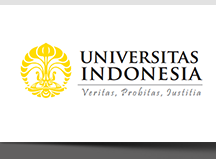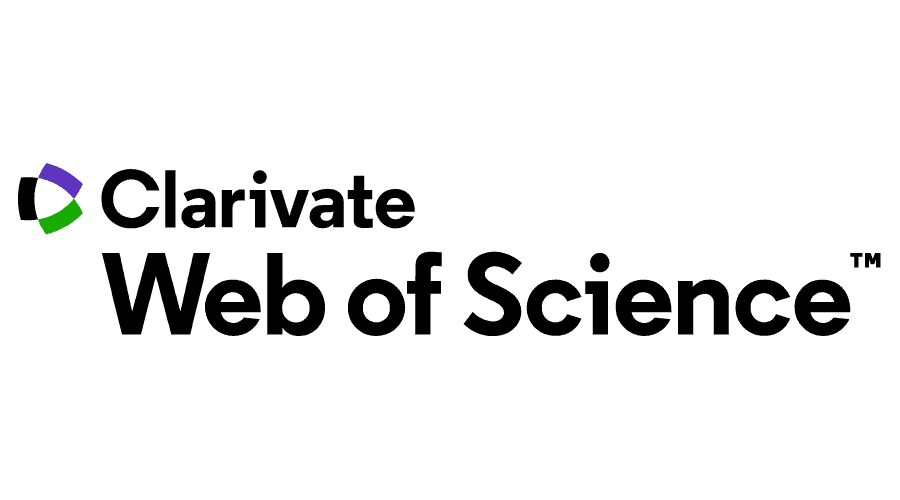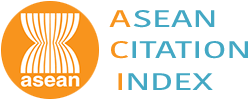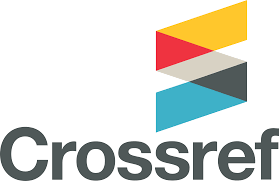Abstract
Research Aims: This study investigates the impact of personality traits, job demands, and emotional intelligence on work-life balance (WLB) among Indonesian educators, with burnout and boundary management styles serving as mediating factors.
Design/Methodology/Approach: This study employed a quantitative research approach, gathering survey data from 295 Indonesian educators. Structural Equation Modelling (SEM) using SmartPLS 4 was conducted to examine direct, indirect, and moderating effects.
Research Findings: Conscientiousness positively influences boundary management, while neuroticism has a detrimental effect. Increased job demands contribute to higher burnout levels, which, in turn, negatively impact both work-life balance (WLB) and boundary management. Burnout serves as a mediator in the relationships between job demands, conscientiousness, and neuroticism with WLB, whereas emotional intelligence moderates the impact of job demands on burnout.
Theoretical Contribution/Originality: This study expands the Job Demands-Resources (JD-R) model and Boundary Theory by incorporating personality traits, burnout, boundary management, and emotional intelligence, providing a comprehensive framework for understanding work-life balance (WLB) in the education sector.
Managerial Implication in the South East Asian Context: Educational institutions should prioritise strategies that enhance educators’ well-being. Measures such as optimised resource allocation, workload adjustments, and the promotion of boundary management practices can mitigate burnout and enhance job satisfaction. These interventions are particularly critical in Southeast Asian education systems, where resource constraints and high job demands pose significant challenges.
Research Limitation & Implications: The cross-sectional design of this study restricts causal inferences, and the findings are specific to Indonesian educators, limiting their generalizability to other contexts.
References
Adil, M. S., & Baig, M. (2018). Impact of job demands-resources model on burnout and employee’s well-being: Evidence from the pharmaceutical organisations of Karachi. IIMB Management Review, 30(2), 119–133. https://doi.org/10.1016/j.iimb.2018.01.004
Adnan Bataineh, K. (2019). Impact of work-life balance, happiness at work, on employee performance. International Business Research, 12(2), 99-112. https://doi.org/10.5539/ibr.v12n2p99
Alam, R. (2025). Building adaptive workforces: HRM and digital competency in tourism innovation. Global Review of Tourism and Social Sciences, 1(2), 119–128. https://doi.org/10.53893/grtss.v1i2.357
Alarcon, G. M. (2011). A meta-analysis of burnout with job demands, resources, and attitudes. Journal of Vocational Behavior, 79(2), 549–562. https://doi.org/10.1016/j.jvb.2011.03.007
Allen, T. D., Merlo, K., Lawrence, R. C., Slutsky, J., & Gray, C. E. (2021). Boundary management and work‐nonwork balance while working from home. Applied Psychology, 70(1), 60–84. https://doi.org/10.1111/apps.12300
Angarita-Osorio, N., Escorihuela, R. M., & Cañete, T. (2024). The relationship between neuroticism as a personality trait and mindfulness skills: A scoping review. Frontiers in Psychology, 15, 1401969. https://doi.org/10.3389/fpsyg.2024.1401969
Antonopoulou, H. (2024). The value of emotional intelligence: Self-Awareness, self-regulation, motivation, and empathy as key components. Technium Education and Humanities, 8, 78–92. https://doi.org/10.47577/teh.v8i.9719
Bakker, A. B., & De Vries, J. D. (2021). Job Demands–Resources theory and self-regulation: New explanations and remedies for job burnout. Anxiety, Stress, & Coping, 34(1), 1–21. https://doi.org/10.1080/10615806.2020.1797695
Bakker, A. B., & Demerouti, E. (2007). The Job Demands‐Resources model: State of the art. Journal of Managerial Psychology, 22(3), 309–328. https://doi.org/10.1108/02683940710733115
Bakker, A. B., Demerouti, E., & Euwema, M. C. (2005). Job resources buffer the impact of job demands on burnout. Journal of Occupational Health Psychology, 10(2), 170–180. https://doi.org/10.1037/1076-8998.10.2.170
Bartley, C. E., & Roesch, S. C. (2011). Coping with daily stress: The role of conscientiousness. Personality and Individual Differences, 50(1), 79–83. https://doi.org/10.1016/j.paid.2010.08.027
Bella, K. M. J. (2023). Creating boundaries to maintaining a healthy work-life balance. International Journal of Multidisciplinary Research in Arts, Science and Technology, 1(3), 24–30. https://doi.org/10.61778/z0n81p57
Berger, D. L. (2023). Does work-life boundary management improve work-life balance for remote workers: A critically appraised topic. Engaged Management ReView, 7(1). https://doi.org/10.28953/2375-8643.1128
Bitar, N., & Davidovich, N. (2024). Transforming pedagogy: The digital revolution in higher education. Education Sciences, 14(8), 811. https://doi.org/10.3390/educsci14080811
Brackett, M. A., Palomera, R., Mojsa‐Kaja, J., Reyes, M. R., & Salovey, P. (2010). Emotion‐regulation ability, burnout, and job satisfaction among British secondary‐school teachers. Psychology in the Schools, 47(4), 406–417. https://doi.org/10.1002/pits.20478
Brogle, S. E., Kerksieck, P., Bauer, G. F., & Morstatt, A. I. (2024). Managing boundaries for well-being: A study of work-nonwork balance crafting during the COVID-19 pandemic. Current Psychology, 43(43), 33626–33639. https://doi.org/10.1007/s12144-024-06118-x
Chandra, V. (2012). Work–life balance: Eastern and western perspectives. The International Journal of Human Resource Management, 23(5), 1040–1056. https://doi.org/10.1080/09585192.2012.651339
Chen, C.-S., Liu, S.-H., Tsai, C.-H., & Wu, S.-G. (2025). Work-to-leisure spillover and job burnout among frontline employees in Taiwan tourism and hospitality industries: The moderating role of job autonomy. Human Systems Management, 01672533251320780. https://doi.org/10.1177/01672533251320780
Cheng, K.-M. (2001). Educational systems: Asia. In International Encyclopedia of the Social & Behavioral Sciences (pp. 4333–4338). Elsevier. https://doi.org/10.1016/B0-08-043076-7/02395-0
Coyle, T., Miller, E. V., & Rivera Cotto, C. (2020). Burnout: Why Are teacher educators reaching their limits? Excelsior: Leadership in Teaching and Learning, 13(1), 63-79. https://doi.org/10.14305/jn.19440413.2020.13.1.04
Embodo, E. J. & Villanueva, H. (2024). Teachers’ instructional workload management and its impact on teaching efficacy. American Journal of Multidisciplinary Research and Innovation, 6, 63–75.
Farfán, J., Peña, M., Fernández-Salinero, S., & Topa, G. (2020). The moderating role of extroversion and neuroticism in the relationship between autonomy at work, burnout, and job satisfaction. International Journal of Environmental Research and Public Health, 17(21), 8166. https://doi.org/10.3390/ijerph17218166
Gabriel, K. P., & Aguinis, H. (2022). How to prevent and combat employee burnout and create healthier workplaces during crises and beyond. Business Horizons, 65(2), 183–192. https://doi.org/10.1016/j.bushor.2021.02.037
Hair, J. F., Sarstedt, M., Ringle, C. M., & Gudergan, S. (2024). Advanced issues in partial least squares structural equation modeling (Second edition). Thousand Oaks: Sage Publications.
Hashmi, S., Tahir, O., Nasir, Z., Hasnain, H., Riaz, R. S. U., Khan, H. M. A., ... & Alghzawi, H. M. (2024). Impact of Emotional Intelligence on Professional Performance and Stress Resilience Among Healthcare Practitioners. Cureus, 16(11), e74113. https://doi.org/10.7759/cureus.74113
Haslam, D., Filus, A., Morawska, A., Sanders, M. R., & Fletcher, R. (2015). The Work–Family Conflict Scale (WAFCS): Development and initial validation of a self-report measure of work–family conflict for use with parents. Child Psychiatry & Human Development, 46(3), 346–357. https://doi.org/10.1007/s10578-014-0476-0
Hatidja, S., Bahtiar, Mariana, L., Quach, T. M., & Aisyah, S. (2025). Employee excellence and workplace diversity: Key drivers of satisfaction, retention, and brand success in ethnic restaurants. Global Review of Tourism and Social Sciences, 1(2), 158–171. https://doi.org/10.53893/grtss.v1i2.319
Haun, V. C., Remmel, C., & Haun, S. (2022). Boundary management and recovery when working from home: The moderating roles of segmentation preference and availability demands. German Journal of Human Resource Management, 36(3), 270–299. https://doi.org/10.1177/23970022221079048
Jamaluddin. (2025). Impact of Remote working on employee productivity during covid-19 in indonesia: The moderating role of job level and the influence of cultural adaptability. Global Review of Tourism and Social Sciences, 1(2), 88–98. https://doi.org/10.53893/grtss.v1i2.356
Kossek, E. E. (2016). Managing work-life boundaries in the digital age. Organizational Dynamics, 45(3), 258–270. https://doi.org/10.1016/j.orgdyn.2016.07.010
Kreiner, G. E., Hollensbe, E. C., & Sheep, M. L. (2009). Balancing borders and bridges: Negotiating the work-home interface via boundary work tactics. Academy of Management Journal, 52(4), 704–730. https://doi.org/10.5465/amj.2009.43669916
Lawrence, D. F., Loi, N. M., & Gudex, B. W. (2019). Understanding the relationship between work intensification and burnout in secondary teachers. Teachers and Teaching, 25(2), 189–199. https://doi.org/10.1080/13540602.2018.1544551
Le, H., Newman, A., Menzies, J., Zheng, C., & Fermelis, J. (2020). Work–life balance in Asia: A systematic review. Human Resource Management Review, 30(4), 100766. https://doi.org/10.1016/j.hrmr.2020.100766
Libbrecht, N., Lievens, F., & Schollaert, E. (2010). Measurement equivalence of the wong and law emotional intelligence scale across self and other ratings. Educational and Psychological Measurement, 70(6), 1007–1020. https://doi.org/10.1177/0013164410378090
Maslach, C., & Leiter, M. P. (2016). Understanding the burnout experience: Recent research and its implications for psychiatry. World Psychiatry, 15(2), 103–111. https://doi.org/10.1002/wps.20311
Maslach, C., Jackson, S. E., & Leiter, M. P. (1997). Maslach burnout inventory. Lanham: Scarecrow Education.
McCrae, R. R., & John, O. P. (1992). An introduction to the five‐factor model and its applications. Journal of Personality, 60(2), 175–215. https://doi.org/10.1111/j.1467-6494.1992.tb00970.x
Mercado, J. O. (2019). Work life balance and level of satisfaction among women teachers assigned in the northernmost part of The Province of Surigao Del Sur, Philippines. The South East Asian Journal of Management, 13(2), 140–150. https://doi.org/10.21002/seam.v13i2.11344
Niazi, A., Memon, M. A., Sarwar, N., Obaid, A., Mirza, M. Z., & Amjad, K. (2024). Work intensification: A systematic review of studies from 1989 to 2022. Work, 77(3), 769-787. https://doi.org/10.3233/WOR-230193
Nwafili, A. K. (2024). Segmentation boundary management strategy, role conflict and employees’ effectiveness in selected public universities in South-South Nigeria. EuroMed Journal of Management, 6(3), 261–280. https://doi.org/10.1504/EMJM.2024.141586
Ortega, L., & Acero, J. P. (2025). Nexus of organizational culture and work performance: The mediating role of organizational politics in local government setting. Global Review of Tourism and Social Sciences, 1(2), 129–144. https://doi.org/10.53893/grtss.v1i2.362
Oseghale, O. R., Pepple, D., Brookes, M., Lee, A., Alaka, H., Nyantakyiwaa, A., & Mokhtar, A. (2024). Covid-19, working from home and work–life boundaries: the role of personality in work–life boundary management. The International Journal of Human Resource Management, 35(21), 3556-3592. https://doi.org/10.1080/09585192.2024.2422013
Pavani, J.-B., Fort, I., Moncel, C., Ritz, H., & Dauvier, B. (2021). Influence of extraversion and neuroticism on the weekly dynamics of jobseekers’ self-regulation. Journal of Vocational Behavior, 130, 103618. https://doi.org/10.1016/j.jvb.2021.103618
Pérez-Fuentes, M. D. C., Molero Jurado, M. D. M., Martos Martínez, Á., & Gázquez Linares, J. J. (2019). Burnout and engagement: Personality profiles in nursing professionals. Journal of Clinical Medicine, 8(3), 286. https://doi.org/10.3390/jcm8030286
Rammstedt, B., & John, O. P. (2020). Big Five Inventory. In V. Zeigler-Hill & T. K. Shackelford (Eds.), Encyclopedia of Personality and Individual Differences (pp. 469–471). Cham: Springer International Publishing. https://doi.org/10.1007/978-3-319-24612-3_445
Reis da Silva, T. M. (2025). Emotional intelligence in higher education: Humanising technology for holistic student development. In S. Tikadar, H. Liu, P. Bhattacharya, & S. Bhattacharya (Eds.), Humanizing Technology With Emotional Intelligence (pp. 117-140). Hershey: IGI Global Scientific Publishing. https://doi.org/10.4018/979-8-3693-7011-7.ch007
Roloff, J., Kirstges, J., Grund, S., & Klusmann, U. (2022). How strongly is personality associated with burnout among teachers? A meta-analysis. Educational Psychology Review, 34(3), 1613-1650. https://doi.org/10.1007/s10648-022-09672-7
Rothbard, N. P., & Ollier-Malaterre, A. (2015).In T. D. Allen & L. T. Eby, Boundary Management (Eds.; Vol. 1). Oxford: Oxford University Press. https://doi.org/10.1093/oxfordhb/9780199337538.013.5
Schlotzhauer, A. E., Ehrhart, M. G., & Jex, S. M. (2025). Extraversion, workplace support, and burnout: The moderating role of neuroticism. Personality and Individual Differences, 232, 112845. https://doi.org/10.1016/j.paid.2024.112845
Sirgy, M. J., & Lee, D. J. (2023). Work-life balance: HR training for employee personal interventions. Cambridge: Cambridge University Press. https://doi.org/10.1017/9781009281782
Steffens, K., Sutter, C., & Sülzenbrück, S. (2023). The concept of “Work-Life-Blending”: A systematic review. Frontiers in Psychology, 14, 1150707. https://doi.org/10.3389/fpsyg.2023.1150707
Syafriani, V., & Yuliani, T. (2025). Bridging theories and practice: Organizational management in an Indonesian school context. Global Review of Tourism and Social Sciences, 1(2), 99-118. https://doi.org/10.53893/grtss.v1i2.338
Ten Brummelhuis, L. L., & Bakker, A. B. (2012). A resource perspective on the work–home interface: The work–home resources model. American Psychologist, 67(7), 545–556. https://doi.org/10.1037/a0027974
Thomas, J., & Reyes, M. E. S. (2024). Understanding the new stress factors affecting teachers’ burnout: A scoping review. Makara Human Behavior Studies in Asia, 28(1), 1-18. https://doi.org/10.7454/hubs.asia.1181024
Tummers, L. G., & Bakker, A. B. (2021). Leadership and job demands-resources theory: A systematic review. Frontiers in psychology, 12, 722080. https://doi.org/10.3389/fpsyg.2021.722080
Wang, T. L., & Oscar, W. (2024). How supportive and competitive work environments influence job attitudes and performance in french sales roles. Global Review of Tourism and Social Sciences, 1(1), 1-12. https://doi.org/10.53893/grtss.v1i1.322
Widiger, T. A., & Oltmanns, J. R. (2017). Neuroticism is a fundamental domain of personality with enormous public health implications. World Psychiatry, 16(2), 144–145. https://doi.org/10.1002/wps.20411
Recommended Citation
Badaruddin, Badaruddin; Ibrahim, Ibrahim; and Fatmasari, Fatmasari
(2025)
"Navigating Work-Life Balance: The Role of Personality, Burnout, and Technology in Indonesian Educators,"
The South East Asian Journal of Management: Vol. 19:
No.
1, Article 3.
DOI: 10.7454/seam.v19i1.1815
Available at:
https://scholarhub.ui.ac.id/seam/vol19/iss1/3
Included in
Human Resources Management Commons, Industrial and Organizational Psychology Commons, Organizational Behavior and Theory Commons













